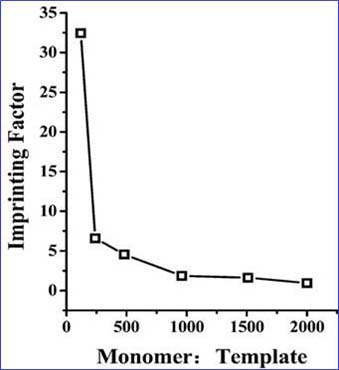
Molecularly imprinted polymers (MIPs) are emerging materials which have a built-in ability to recognize a specific substrate, called the template. MIPs have been synthesized using the molecular imprinting technique which leaves cavities in polymer matrix with affinity to a chosen "template" molecule.
MIPs have been widely applied in many fields, such as chemical separations, catalysis and sensors. However, to prepare MIPs faces a challenge that a substantial initial amount of the template is needed, which costs high for those poorly soluble templates.
Researchers from Xinjiang Technical Institute of Physics & Chemistry of Chinese Academy of Sciences developed a new strategy to minimize amount of template by addition of macromolecular crowding agent on preparation of MIPs with very low amount of template consumption. This approach is simple and valuable for applications of MIP preparation.
Researchers selected polystyrene (PS) as the crowding agent and a solution of PS in tetrahydrofuran (THF) as the porogenic agent. Ellagic acid (EA), a potent antioxidant with an abundant content in pomegranate (Punicagranatum L.) husk, was chosen as the template. EA-imprinted monoliths were synthesized by in-situ polymerization in a stainless-steel tube.
Researchers compared the trend of the imprinting factor with the variation of functional monomer–template (M–T) molar ratio in the range 120:1 to 2000:1, and they found the ratio can be achieved the highest when the imprinting factor of up to 32.4 (Figure).
"Even at the M–T ratio of 1510:1, the imprinting effect is clearly visible for this imprinting system,” said SUN Guangying, the first author of the article. This demonstrates that the crucial effect of macromolecular crowding agent in achieving effective imprinting using a very low amount of template.
The prepared EA MIP can be used for specific extraction of EA from an organic extract of pomegranate rind,
This study was published on Analytical and Bioanalytical Chemistry. The work was supported by the High Technology Research and Development Program of Xinjiang.

Figure: Imprinting factor on the EA-imprinted monoliths prepared with different ratios of functional monomer to template. (Image by XTIPC)

86-10-68597521 (day)
86-10-68597289 (night)

52 Sanlihe Rd., Xicheng District,
Beijing, China (100864)

